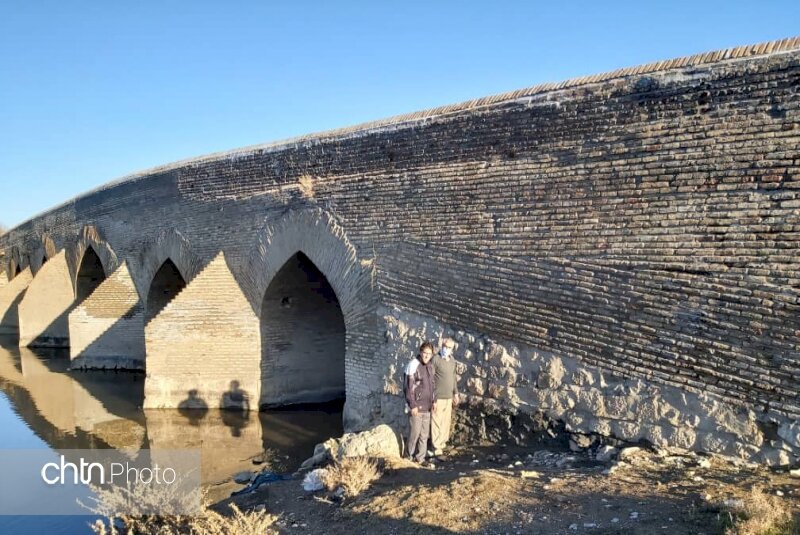Historical arch bridge in Lorestan being strengthened, reinforced

TEHRAN –The historical bridge of Chalanchulan, an arch brick monument located in the western province of Lorestan, has undergone some rehabilitation works, the provincial tourism chief has announced.
The project involves strengthening, reinforcing, lightening, and cleaning the historical structure, Seyyed Amin Qasemi said on Saturday.
Last year, a restoration project was commenced on the Qajar-era (1789-1925) bridge, which had suffered damage from heavy flooding in 2019.
With 120 meters long, Chalanchulan Bridge was built on the remains of an ancient structure dating back to the Sassanid era (224 CE to 651). It has six brick arches and its columns are made of stone and brick. The structure was inscribed on the National Heritage list in 1997.
An arch bridge carries loads primarily by compression, which exerts on the foundation both vertical and horizontal forces. Arch foundations must therefore prevent both vertical settling and horizontal sliding. Despite the more complicated foundation design, the structure itself normally requires less material than a beam bridge of the same span.
Arch bridges can be classified into deck arch bridges (featuring arches below the deck) and through arch bridges (those with arches above the deck, generally tied arches). In all arch bridges, the structural difficulty can be found in the minimization of the misalignment of the arch axis and the line of thrust, as well as a sufficient bending and buckling resistance. General design recommendations focus principally on the arch-to-span ratio, the arch and deck slenderness, and the number of hangers or piers.
Recent innovative arch bridges include high-speed railway (HSR) bridges, concrete-filled steel tubular and precast concrete arches, high-performance concrete or ultra-high performance concrete arches, and steel-concrete composite arches, and feature innovative erection methods. Recent research has been dedicated to the shape and magnitude of equivalent geometric imperfections, fatigue detailing, erection methods, reduction of the arch's self-weight, and new materials for arches, hangers, and ties.
Lorestan, which is a region of raw beauty, was inhabited by Iranian Indo-European peoples, including the Medes, c. 1000 BC. Cimmerians and Scythians intermittently ruled the region from about 700 to 625 BC. The Luristan Bronzes noted for their eclectic array of Assyrian, Babylonian, and Iranian artistic motifs, date from this turbulent period.
Lorestan was incorporated into the growing Achaemenid Empire in about 540 BC and successively was part of the Seleucid, Parthian, and Sassanid dynasties.
ABU/MG

Leave a Comment